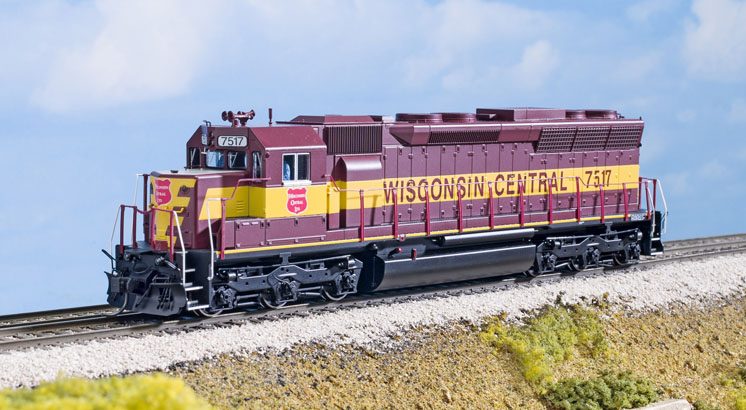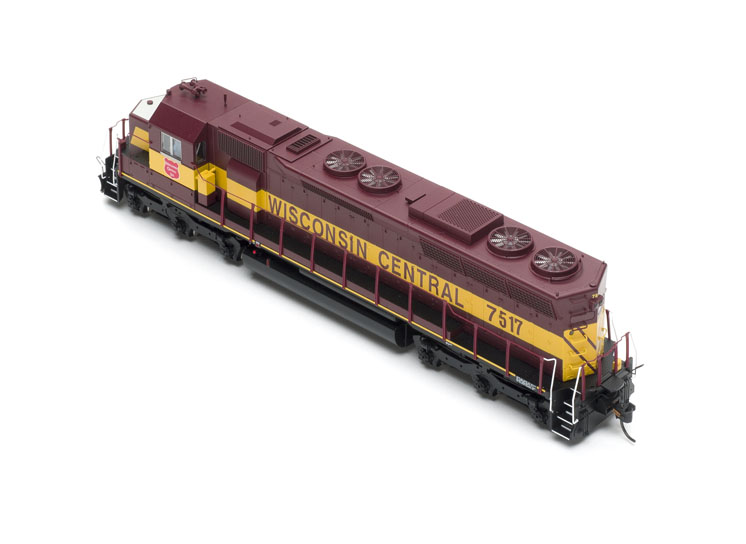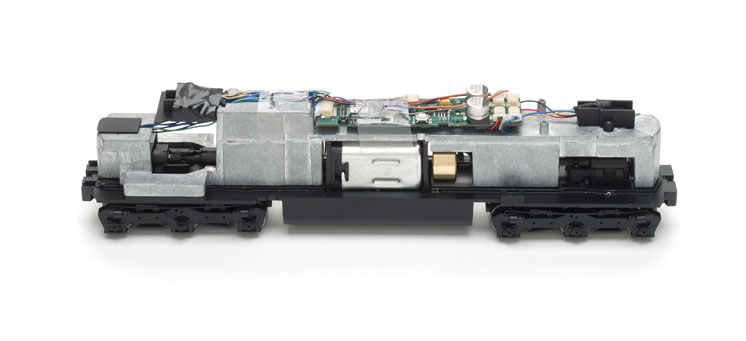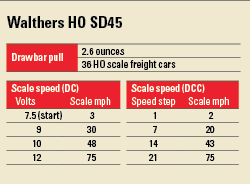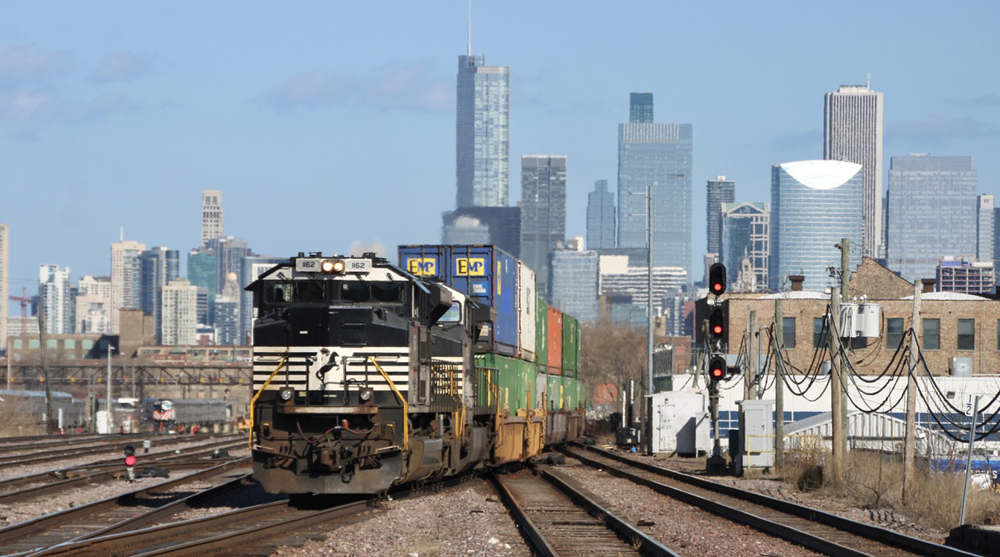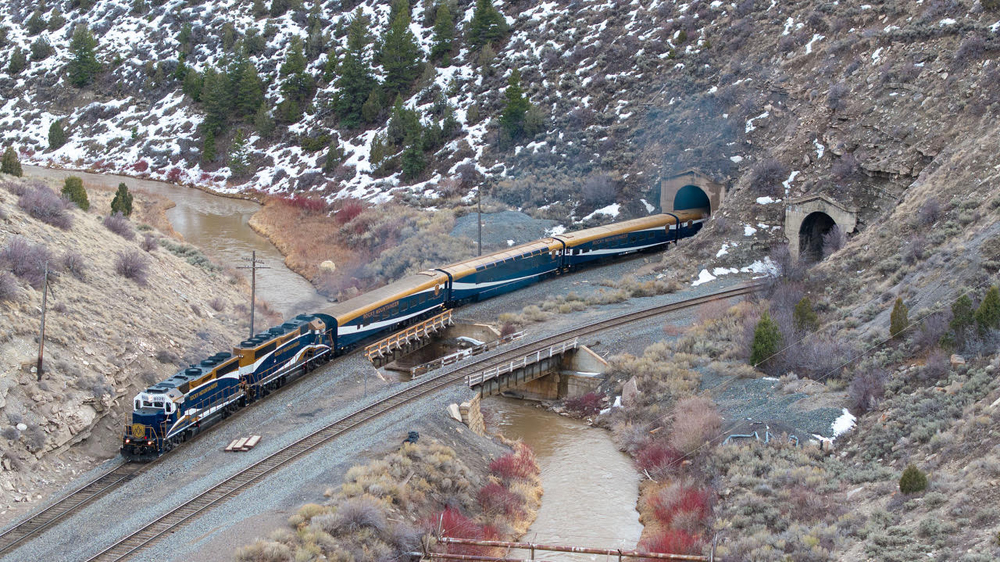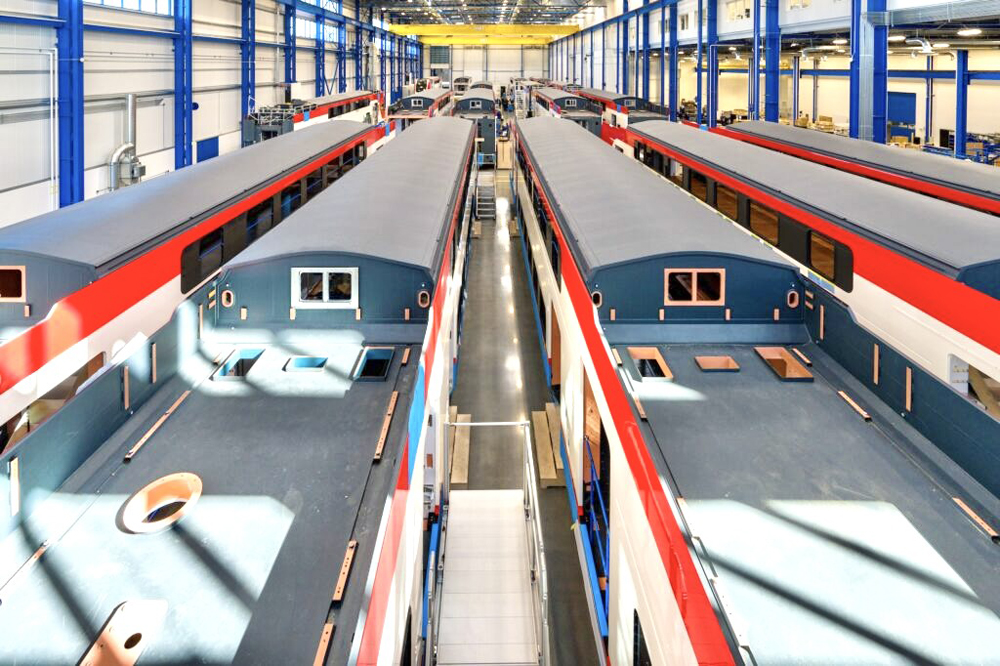From its flared radiators to its Flexicoil trucks, the HO scale SD45 from WalthersProto captures the look of this second-generation diesel. All the versions offered also feature roadname- and era-specific detailing. I tested a Wisconsin Central Ry. version that came equipped with a SoundTraxx Tsunami decoder.
The prototype. With its 20-cylinder 645E3 turbocharged diesel engine, the SD45 was the first North American diesel to have an engine larger than 16 cylinders. General Motors Electro-Motive Division sold 1,260 SD45s to U.S. railroads. The 3,600 hp locomotive was produced from 1965 to 1971 before being replaced by the SD45-2 in EMD’s product line.
Many of the big six-axle diesels moved on to second and third careers after the 1980s on regional and short lines, as the Class 1 railroads that bought the SD45s started retiring them. A few are still in use today.
Among those second-hand owners was the Wisconsin Central, which had more than 100 SD45s on its roster by the time the Canadian National acquired the WC in the early 2000s. The prototype for our review sample was built in 1971 and started its career as Burlington Northern no. 6530 before being purchased by the WC in 1994. The Walthers model depicts the prototype after it was renumbered from WC 6530 to 7517 in the late 1990s
The model. Most of the model’s dimensions match those of a drawing in the Model Railroader Cyclopedia: Vol. 2, Diesel Locomotives (Kalmbach Publishing Co., out of print). The ditch lights on the model are a scale foot farther inboard than those of the prototype. The placement of the well-defined molded engine access doors, air-intake grills, and other details match the drawing and prototype photos.
All the separate detail parts are factory applied, including the three-chime Leslie air horn, firecracker antenna, and windshield wipers. All the grab irons are scale-profile wire parts. The handrails are made of flexible acetal plastic that resists breaking.
The rooftop fans look especially realistic. They are modeled as separate parts underneath see-through grills.
Other WC-specific details include the winterization hatch on the roof, a brake wheel mounted on the rear engineer’s side of the long hood, and modern-era uncoupling levers. The model doesn’t have the all-weather engineer’s cab window found on the prototype, but this could be easily added by the modeler as HO scale all-weather cab windows are available from Detail Associates among other firms.
The maroon-and-gold paint scheme on the model is correct for no. 7517 as it appeared in the late 1990s. There’s sharp color separation, and all the lettering is crisp and straight. Walthers correctly modeled the mismatched font of the prototype road number.
Mechanism. After removing both coupler boxes and a screw in front of the fuel tank, I carefully removed the locomotive’s body shell. A die-cast metal weight runs the length of the chassis. Openings in the weight reveal truck-mounted gearboxes and the brass-flywheel-equipped can motor.
The SoundTraxx decoder is attached to the top of the weight. A vertically mounted speaker is behind the cab. Wires run to light-emitting diodes (LEDs) at the front and rear of the locomotive.
Performance. Out of the box, the SD45 proved a smooth operator. In speed step 1 it crept along at 2 scale mph and reached a prototypical top speed of 75 scale mph in speed step 28. For finer control, the decoder supports 128 speed steps and features user-loadable and 13 preset speed curves. I added some acceleration and deceleration momentum, using configuration variables (CVs) 3 and 4, and then proceeded to our layout for some test running.
The SD45 smoothly ran through the no. 5 turnouts in a yard ladder as well as various crossovers without so much as a headlight flicker. The model also easily negotiated an 18″ radius curve.
During a hill-climb test, the locomotive rolled steadily up a curved 1.5 percent grade then, up a 3 percent grade, with 13 HO freight cars in tow. The model’s drawbar pull measured 2.6 ounces on our force meter, which is the equivalent of 36 free-rolling HO freight cars on straight and level track. The locomotive’s metal knuckle couplers also held tightly throughout testing.
User-triggered functions on the model include the headlights, long and short whistle blasts, and a dynamic brake fan. I could also dim the headlights and turn on the ditch lights. When I blew the horn the ditch lights flashed alternately, which is correct for the prototype.
Unlike the latest SoundTraxx decoders, function mapping is limited to specific ranges of button/function combinations. However, I was happy to find that one of my favorite features, the SoundTraxx train brake, is factory programmed on function 9 of the SD45. With this feature I could stop and start the train independently from the throttle setting. I find the independent brake provides a more realistic experience when running trains.
I easily advance consisted the SD45 for m.u. operations. In addition to CV19, the decoder also supports CVs 21 and 22, which allowed me to access certain functions, such as the horn, using the consist address. A paper quick start sheet is included with the model, but much more Tsunami programming information can be found in the online instruction manual at www.soundtraxx.com.
Direct-current operation. Like any dual-mode sound decoder operated on a DC layout, the Tsunami requires a lot of voltage to get going, which limits DC operation to a range from 7.5 to 12 volts. However, the model ran smoothly without hesitation at 3 scale mph and accelerated smoothly to 75 scale mph. The headlights automatically switched on or off according to the locomotive’s direction.
The diesel engine sound revs up or down with the DC throttle setting. A quick decrease of the throttle causes a brake squeal. Other automatic effects are factory-programmed, including a bell that comes on at speeds under 10 scale mph. I also heard forward (two toots) and reverse (three toots) horn signals when I flipped the direction switch. These effects can be turned off or adjusted. However, to do so requires either a DCC system or a DC sound controller, such as the MRC Tech 6.
With its excellent sound, accurate details, and spot-on WC paint job, the WalthersProto HO scale SD45 looked right at home hauling freight through the upper Midwest scenery of our staff layout, the Milwaukee, Racine & Troy.
Price: $299.98 (DCC and sound), $199.98 (DC, no sound)
Manufacturer
Wm. K. Walthers Inc.
5601 W. Florist Ave.
Milwaukee, WI 53218
www.walthers.com
Era: 1965 to present
Road names (multiple numbers each): Wisconsin Central; Atchison, Topeka & Santa Fe; Canadian Pacific; Conrail; Seaboard System
Features
▪▪All-wheel drive and electrical pickup
▪▪Blackened metal RP-25 contour wheels in gauge
▪▪Five-pole skew-wound motor with brass flywheel
▪▪Light-emitting diode (LED) headlights
▪▪Metal Proto-Max knuckle couplers at correct height
▪▪Minimum radius: 18″
▪▪SoundTraxx Tsunami dual-mode decoder (DCC version only)
▪▪Weight: 1 pound 4.1 ounces





